Grow Bag Zucchini: Imagine harvesting plump, juicy zucchini right from your patio, balcony, or even a sunny corner of your driveway! Sounds too good to be true? It’s not! I’m here to tell you that growing zucchini in grow bags is not only possible, but it’s also surprisingly easy and rewarding. For centuries, gardeners have sought innovative ways to cultivate their favorite vegetables, and grow bags offer a modern twist on traditional container gardening.
Zucchini, a summer squash with Italian origins, has become a staple in kitchens worldwide. But let’s face it, zucchini plants can be space hogs! That’s where the magic of grow bags comes in. If you’re short on space, dealing with poor soil, or simply want a more portable gardening solution, then this DIY guide is for you. I’ll walk you through everything you need to know to successfully grow bag zucchini, from choosing the right bag and soil to providing the perfect amount of sunlight and water.
Why struggle with limited garden space or back-breaking weeding when you can enjoy a bountiful zucchini harvest with minimal effort? This DIY trick is a game-changer for urban gardeners, apartment dwellers, and anyone looking for a convenient and effective way to cultivate this versatile vegetable. Get ready to impress your friends and family with your homegrown zucchini – let’s get started!
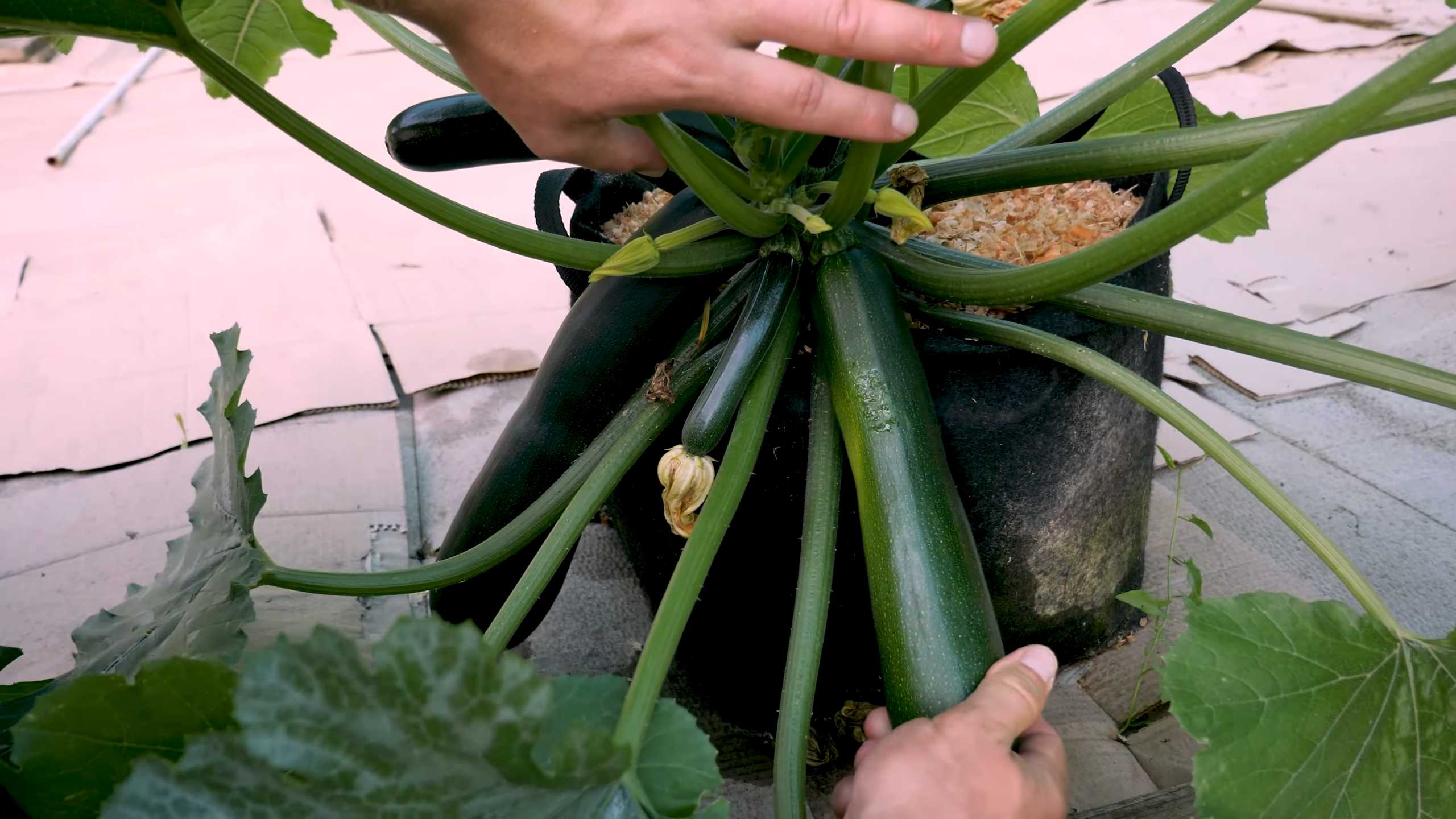
Growing Zucchini in Grow Bags: A Beginner’s Guide
Hey there, fellow gardening enthusiasts! I’m so excited to share my experience with growing zucchini in grow bags. It’s a fantastic way to enjoy fresh, homegrown zucchini even if you’re short on space or have less-than-ideal soil. I’ve found it to be surprisingly easy and rewarding, and I’m confident you can do it too!
Why Grow Zucchini in Grow Bags?
Before we dive in, let’s talk about why grow bags are a great option for zucchini:
* Space-Saving: Grow bags are perfect for balconies, patios, or small gardens. You don’t need a huge plot of land to enjoy fresh zucchini.
* Improved Drainage: Grow bags allow for excellent drainage, which is crucial for zucchini plants. They hate sitting in soggy soil.
* Better Soil Control: You can use a high-quality potting mix specifically formulated for vegetables, ensuring your zucchini gets the nutrients it needs.
* Portability: Need to move your zucchini plant to a sunnier spot? No problem! Grow bags are easy to move around.
* Warmer Soil: Grow bags tend to warm up faster than the ground, giving your zucchini a head start in the spring.
Choosing the Right Grow Bag and Soil
Okay, let’s get started with the essentials!
* Grow Bag Size: I recommend using a grow bag that’s at least 15 gallons in size. Zucchini plants are heavy feeders and need plenty of room for their roots to grow. A 20-gallon bag is even better!
* Material: Fabric grow bags are my go-to. They’re breathable, allowing for good air circulation and preventing root circling.
* Soil: Use a high-quality potting mix specifically designed for vegetables. Avoid using garden soil, as it can be too heavy and compact in a grow bag. I like to amend my potting mix with compost for added nutrients and drainage.
Step-by-Step Guide to Planting Zucchini in Grow Bags
Alright, let’s get our hands dirty! Here’s a step-by-step guide to planting zucchini in grow bags:
1. Gather Your Supplies:
* Grow bag (15-20 gallons)
* High-quality potting mix
* Compost (optional)
* Zucchini seeds or seedlings
* Watering can or hose
* Slow-release fertilizer (optional)
* Trowel or small shovel
2. Prepare the Grow Bag:
* Place the grow bag in its final location. Once it’s filled with soil, it will be heavy and difficult to move.
* If your grow bag is new, give it a good shake to loosen it up.
* Fold down the top edge of the grow bag a few inches to make it easier to fill.
3. Fill the Grow Bag with Soil:
* Mix the potting mix with compost (if using) in a large container or directly in the grow bag.
* Fill the grow bag about two-thirds full with the soil mixture.
* If you’re using slow-release fertilizer, mix it into the top few inches of the soil. Follow the instructions on the fertilizer package for the correct amount.
4. Plant the Zucchini Seeds or Seedlings:
* From Seed: Make a small hole in the center of the soil, about 1 inch deep. Place 2-3 zucchini seeds in the hole and cover them with soil. Gently water the area. You’ll thin out the seedlings later, keeping the strongest one.
* From Seedling: Gently remove the zucchini seedling from its container. Loosen the roots slightly. Dig a hole in the center of the soil that’s large enough to accommodate the root ball. Place the seedling in the hole and cover the roots with soil. Gently pat the soil around the base of the plant.
5. Water Thoroughly:
* Water the grow bag thoroughly until water drains out of the bottom. This will help settle the soil and ensure the roots are well-hydrated.
6. Mulch (Optional):
* Add a layer of mulch around the base of the zucchini plant. Mulch helps retain moisture, suppress weeds, and regulate soil temperature. I like to use straw or wood chips.
Caring for Your Zucchini Plants
Now that your zucchini is planted, it’s time to provide the care it needs to thrive!
* Watering: Zucchini plants need consistent moisture, especially during hot weather. Water deeply whenever the top inch of soil feels dry to the touch. Avoid overhead watering, as it can lead to fungal diseases. I prefer to water at the base of the plant.
* Sunlight: Zucchini plants need at least 6-8 hours of sunlight per day. Choose a sunny location for your grow bag.
* Fertilizing: Zucchini plants are heavy feeders and benefit from regular fertilization. Use a balanced fertilizer (e.g., 10-10-10) every 2-3 weeks. You can also use a liquid fertilizer diluted according to the package instructions.
* Pollination: Zucchini plants have separate male and female flowers. The female flowers need to be pollinated in order to produce fruit. If you’re not seeing any zucchini forming, you may need to hand-pollinate the flowers. To do this, use a small paintbrush to transfer pollen from the male flower to the female flower. You can identify female flowers by the small zucchini fruit at the base of the flower.
* Pest and Disease Control: Keep an eye out for common zucchini pests like squash bugs, squash vine borers, and aphids. You can use insecticidal soap or neem oil to control these pests. Powdery mildew is a common fungal disease that can affect zucchini plants. To prevent powdery mildew, ensure good air circulation around the plants and avoid overhead watering. You can also use a fungicide if necessary.
* Pruning: Pruning zucchini plants can help improve air circulation and encourage fruit production. Remove any yellow or damaged leaves. You can also remove some of the larger leaves to allow more sunlight to reach the developing zucchini.
Harvesting Your Zucchini
The best part! You’ll typically be able to harvest your first zucchini about 50-60 days after planting.
* Harvesting Time: Harvest zucchini when they are young and tender, typically 6-8 inches long. Larger zucchini can be tough and seedy.
* Harvesting Technique: Use a sharp knife or pruning shears to cut the zucchini from the plant. Leave a short stem attached to the zucchini.
* Regular Harvesting: Harvest zucchini regularly to encourage the plant to produce more fruit. If you leave zucchini on the plant for too long, it will signal to the plant to stop producing new fruit.
Troubleshooting
Even with the best care, you might encounter some challenges. Here are a few common issues and how to address them:
* Yellowing Leaves: This could be a sign of overwatering, underwatering, nutrient deficiency, or pest infestation. Check the soil moisture, fertilize if necessary, and inspect the plant for pests.
* Lack of Fruit Production: This could be due to poor pollination, lack of sunlight, or nutrient deficiency. Hand-pollinate the flowers, ensure the plant is getting enough sunlight, and fertilize regularly.
* Powdery Mildew: This fungal disease appears as a white, powdery coating on the leaves. Improve air circulation, avoid overhead watering, and use a fungicide if necessary.
* Squash Bugs: These pests can damage zucchini plants by sucking the sap from the leaves. Handpick the bugs off the plants or use insecticidal soap.
* Squash Vine Borers: These pests bore into the stems of zucchini plants, causing them to wilt and die. Wrap the base of the stems with aluminum foil to prevent the borers from entering.
Tips for Success
Here are a few extra tips to help you succeed with growing zucchini in grow bags:
* Choose the Right Variety: Some zucchini varieties are more compact and better suited for grow bags than others. Look for bush varieties like ‘Black Beauty’ or ‘Spacemiser’.
* Provide Support: As the zucchini plant grows, it may need some support. You can use a tomato cage or stakes to keep the plant upright.
* Rotate Your Crops: If you’re growing zucchini in the same grow bag year after year, rotate your crops to prevent soilborne diseases.
* Don’t Overcrowd: Plant only one zucchini plant per grow bag to ensure it has enough space and nutrients.
* Enjoy Your Harvest! Zucchini is a versatile vegetable that can be used in a variety of dishes. Enjoy your fresh, homegrown zucchini in salads, soups, stir-fries, and baked goods.
Growing zucchini in grow bags is a rewarding experience that anyone can enjoy. With a little bit of
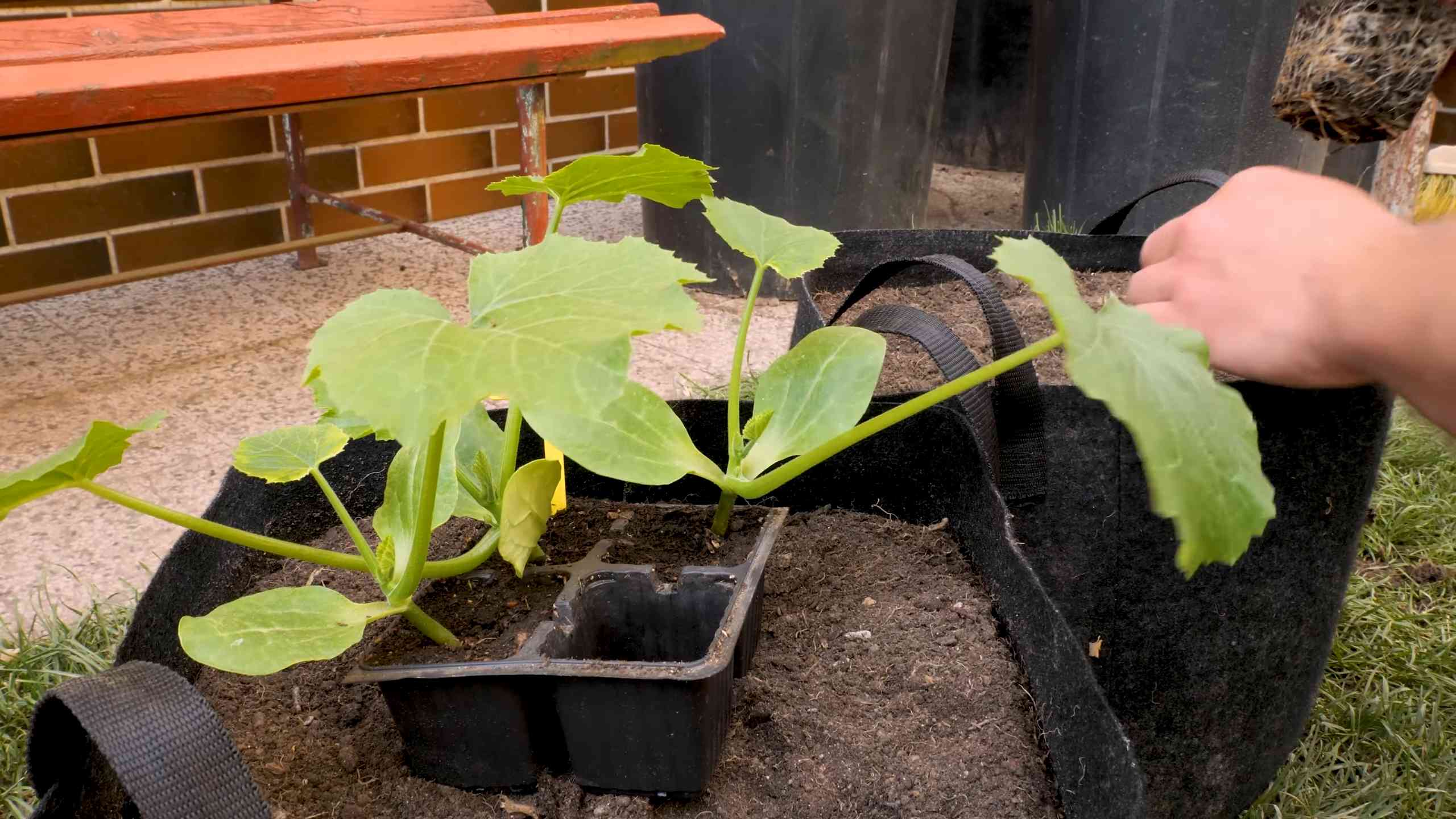
Conclusion
So, there you have it! Growing zucchini in grow bags is not just a viable option; it’s a game-changer for gardeners of all levels, especially those with limited space or less-than-ideal soil conditions. We’ve walked through the simple steps, highlighted the benefits, and armed you with the knowledge to cultivate your own thriving zucchini patch, right in the comfort of your balcony, patio, or even a sunny corner of your yard.
Why is this DIY trick a must-try? Because it unlocks the potential for fresh, delicious zucchini, bursting with flavor and nutrients, without the hassle of traditional in-ground gardening. Imagine stepping outside and harvesting your own zucchini for a summer salad, a hearty zucchini bread, or a flavorful stir-fry. The satisfaction of nurturing a plant from seed to table is unparalleled, and grow bags make that experience accessible to everyone.
But the beauty of this method lies in its adaptability. Feel free to experiment with different varieties of zucchini. Consider trying golden zucchini for a pop of color, or round zucchini for a unique presentation. You can also companion plant herbs like basil or oregano in the same grow bag to deter pests and enhance the flavor of your zucchini. Another variation is to use different sizes of grow bags depending on the space you have available and the number of plants you want to grow. Remember to adjust watering and fertilization accordingly.
Don’t be afraid to get creative with your grow bag setup. You can even elevate your grow bags on stands or pallets for better drainage and easier access. The possibilities are endless!
Ultimately, the success of your grow bag zucchini adventure hinges on your willingness to try. Embrace the learning process, observe your plants closely, and adjust your approach as needed. Remember, gardening is a journey, not a destination.
We are confident that you’ll be amazed by the results. The convenience, the control over growing conditions, and the sheer abundance of zucchini you can harvest will make you a grow bag convert.
So, what are you waiting for? Grab your grow bags, your zucchini seeds, and get ready to embark on a rewarding gardening experience. We encourage you to try this DIY trick and share your experiences with us! Tell us about your successes, your challenges, and any tips you discover along the way. Let’s build a community of grow bag zucchini enthusiasts and inspire others to embrace the joys of home gardening. Share your photos and stories on social media using #GrowBagZucchini and let’s celebrate the bounty together! Happy gardening!
Frequently Asked Questions (FAQ)
What size grow bag is best for zucchini?
The ideal size grow bag for zucchini is typically between 15 and 25 gallons. This provides ample space for the roots to develop and allows the plant to thrive. Smaller grow bags may restrict root growth and lead to smaller, less productive plants. If you’re planning to grow multiple zucchini plants in one bag, opt for a larger size, such as a 30-gallon bag. Remember that larger bags will also require more soil.
What type of soil should I use in my grow bag for zucchini?
Zucchini plants thrive in well-draining, nutrient-rich soil. A good mix would be a combination of potting mix, compost, and perlite or vermiculite. The potting mix provides a base for the soil, the compost adds essential nutrients, and the perlite or vermiculite improves drainage and aeration. Avoid using garden soil directly in your grow bags, as it can become compacted and hinder root growth. You can also add slow-release fertilizer to the soil mix to provide a steady supply of nutrients throughout the growing season.
How often should I water my zucchini plants in grow bags?
Watering frequency depends on several factors, including the weather, the size of the grow bag, and the stage of growth of the plant. Generally, you should water your zucchini plants deeply whenever the top inch of soil feels dry to the touch. During hot, dry weather, you may need to water daily, or even twice a day. Be sure to water at the base of the plant to avoid wetting the foliage, which can increase the risk of fungal diseases. Grow bags tend to dry out faster than traditional garden beds, so regular monitoring is crucial.
How much sunlight do zucchini plants need in grow bags?
Zucchini plants require at least 6-8 hours of direct sunlight per day to thrive. Choose a location for your grow bags that receives ample sunlight throughout the day. If you live in a particularly hot climate, you may want to provide some afternoon shade to prevent the plants from overheating. Insufficient sunlight can lead to leggy growth, reduced fruit production, and increased susceptibility to pests and diseases.
Do I need to fertilize my zucchini plants in grow bags?
Yes, zucchini plants are heavy feeders and benefit from regular fertilization. Start by incorporating slow-release fertilizer into the soil mix when you plant your zucchini. Then, supplement with liquid fertilizer every 2-3 weeks throughout the growing season. Choose a fertilizer that is high in phosphorus and potassium, as these nutrients are essential for fruit development. Avoid over-fertilizing, as this can lead to excessive foliage growth at the expense of fruit production.
How do I prevent pests and diseases from affecting my zucchini plants in grow bags?
Prevention is key when it comes to pests and diseases. Start by choosing disease-resistant zucchini varieties. Inspect your plants regularly for signs of pests or diseases, such as aphids, squash bugs, or powdery mildew. Remove any affected leaves or plants immediately. You can also use organic pest control methods, such as insecticidal soap or neem oil, to control pests. Ensure good air circulation around your plants by spacing them adequately and pruning any overcrowded foliage. Proper watering and fertilization can also help to strengthen your plants and make them more resistant to pests and diseases.
Can I grow zucchini in grow bags indoors?
While it’s possible to grow zucchini in grow bags indoors, it requires a significant investment in grow lights. Zucchini plants need a lot of light, and natural indoor light is usually not sufficient. You would need to provide at least 12-16 hours of artificial light per day using high-intensity grow lights. Additionally, you would need to ensure proper ventilation and pollination, as there will be no natural pollinators indoors. Growing zucchini in grow bags outdoors is generally a much easier and more productive option.
How do I know when my zucchini is ready to harvest?
Zucchini is typically ready to harvest when it is 6-8 inches long. The skin should be smooth and tender, and the fruit should feel firm to the touch. Avoid letting the zucchini grow too large, as it can become seedy and less flavorful. Use a sharp knife or pruning shears to cut the zucchini from the plant, leaving a short stem attached. Regular harvesting will encourage the plant to produce more fruit.
Can I reuse grow bags for zucchini next year?
Yes, you can reuse grow bags for zucchini next year, but it’s important to properly clean and prepare them first. Remove any remaining plant debris and soil from the bags. Wash the bags thoroughly with soap and water to remove any dirt or pathogens. Allow the bags to dry completely before storing them in a cool, dry place. Before reusing the bags, consider amending the soil with fresh compost and fertilizer to replenish nutrients. You may also want to rotate your crops to prevent the buildup of soilborne diseases.
What are the benefits of growing zucchini in grow bags compared to traditional gardening?
Growing zucchini in grow bags offers several advantages over traditional gardening, including:
* **Improved drainage:** Grow bags allow for excellent drainage, preventing root rot and other moisture-related problems.
* **Better soil control:** You can use a custom soil mix that is specifically tailored to the needs of zucchini plants.
* **Portability:** Grow bags can be easily moved to different locations to take advantage of sunlight or to protect plants from harsh weather.
* **Space-saving:** Grow bags are ideal for gardeners with limited space, such as those living in apartments or condos.
* **Reduced weeding:** Grow bags help to suppress weeds, making gardening easier and more enjoyable.
* **Warmer soil:** Grow bags tend to warm up faster than traditional garden beds, allowing for earlier planting and a longer growing season.
* **Easier harvesting:** Grow bags can be placed at a convenient height for harvesting, reducing strain on your back.

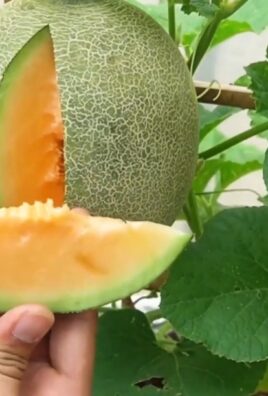
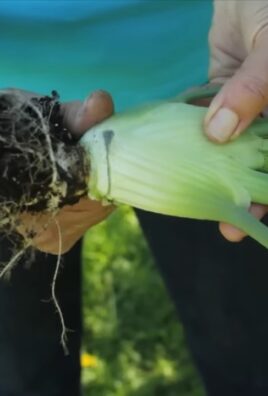
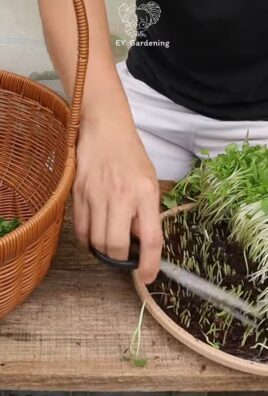
Leave a Comment